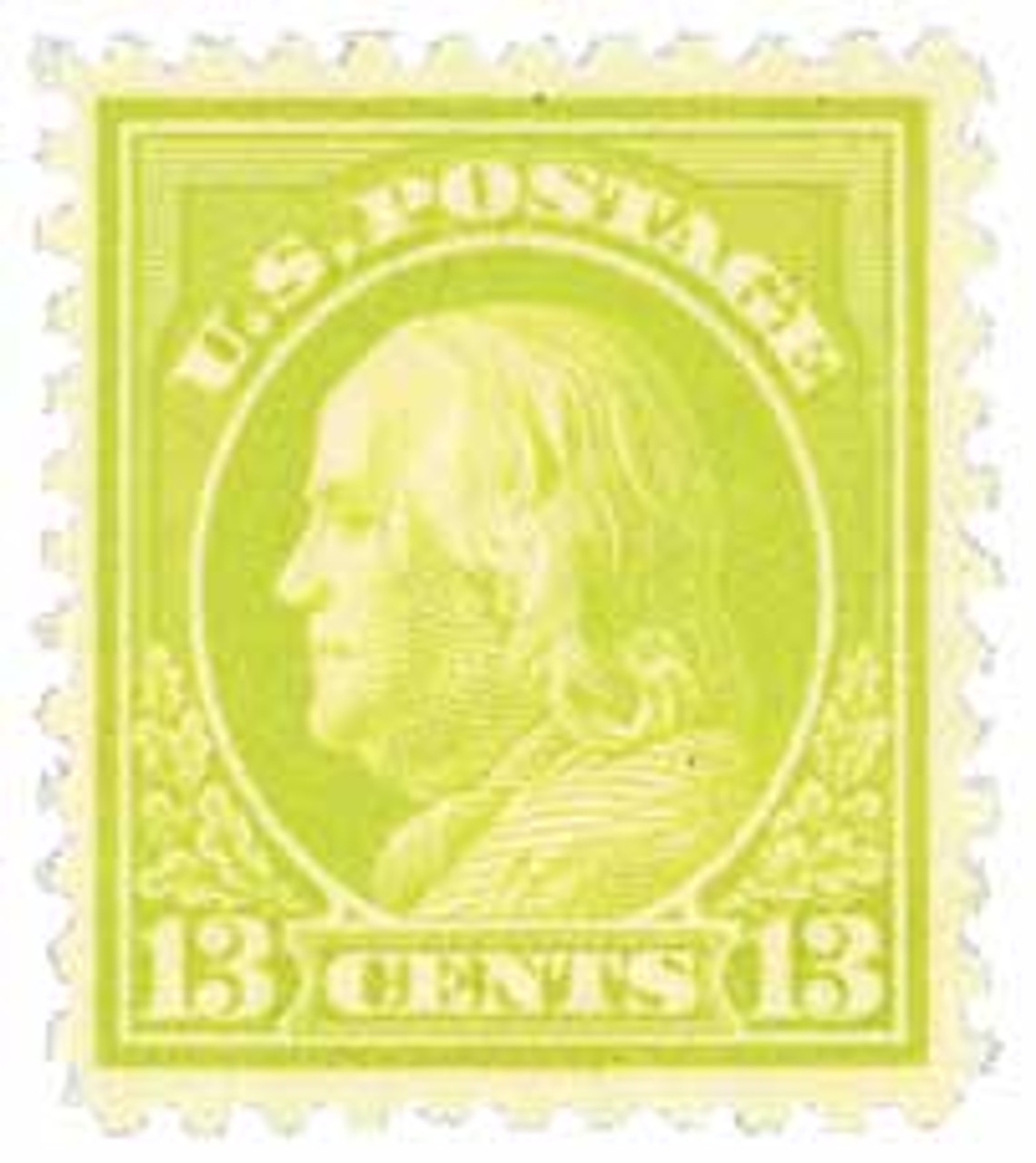
U.S. #513
1917-19 13¢ Franklin
An August 1917 memo from the Post Office Department requested that postmasters use the highest possible denominated stamp for postage – preferably with a single stamp. The increase in war-time rates meant a domestic first class letter cost 3¢. Combined with the 10¢ registered letter fee, there was a real need for a 13¢ stamp.
Despite the request, it would be a year and a half before U.S. #513 was issued to fulfill that need. However, the decision had already been made to reduce the domestic first class rate back to the 2¢ fee it had been before World War I. So, issued to address a specific need, U.S. #513 soon lost its purpose after the change went into effect on July 1, 1919.
Flat Plate, Perf. 11
The Bureau of Engraving and Printing continued to use the 10 gauge perforation machines on flat plate stamp sheets even after 11 perf. stamps proved successful. In an effort to save money, they used the perf. 10 wheels until they wore out. Beginning in early 1917, stamps produced on flat plate presses were given 11 gauge perfs.
That marked the beginning of the flat plate perforated 11 Series of 1917-19 stamps. Perf. 12 had proven too flimsy, and perf. 10 was too difficult to separate without damaging the stamp, so perf. 11 became a satisfactory solution.
13¢ Franklin, issued to satisfy the 10¢ registered letter fee along with the 3¢ first-class rate.
Issue Date: January 10, 1919
Category: Definitive
Printed by: Bureau of Engraving and Printing
Printing Method: Flat plate, using plates of 400 with four panes of 100
Watermark: None
Perforation: 11
Color: Apple green
Water-activated Gum
LessU.S. #513
1917-19 13¢ Franklin
An August 1917 memo from the Post Office Department requested that postmasters use the highest possible denominated stamp for postage – preferably with a single stamp. The increase in war-time rates meant a domestic first class letter cost 3¢. Combined with the 10¢ registered letter fee, there was a real need for a 13¢ stamp.
Despite the request, it would be a year and a half before U.S. #513 was issued to fulfill that need. However, the decision had already been made to reduce the domestic first class rate back to the 2¢ fee it had been before World War I. So, issued to address a specific need, U.S. #513 soon lost its purpose after the change went into effect on July 1, 1919.
Flat Plate, Perf. 11
The Bureau of Engraving and Printing continued to use the 10 gauge perforation machines on flat plate stamp sheets even after 11 perf. stamps proved successful. In an effort to save money, they used the perf. 10 wheels until they wore out. Beginning in early 1917, stamps produced on flat plate presses were given 11 gauge perfs.
That marked the beginning of the flat plate perforated 11 Series of 1917-19 stamps. Perf. 12 had proven too flimsy, and perf. 10 was too difficult to separate without damaging the stamp, so perf. 11 became a satisfactory solution.
13¢ Franklin, issued to satisfy the 10¢ registered letter fee along with the 3¢ first-class rate.
Issue Date: January 10, 1919
Category: Definitive
Printed by: Bureau of Engraving and Printing
Printing Method: Flat plate, using plates of 400 with four panes of 100
Watermark: None
Perforation: 11
Color: Apple green
Water-activated Gum


















